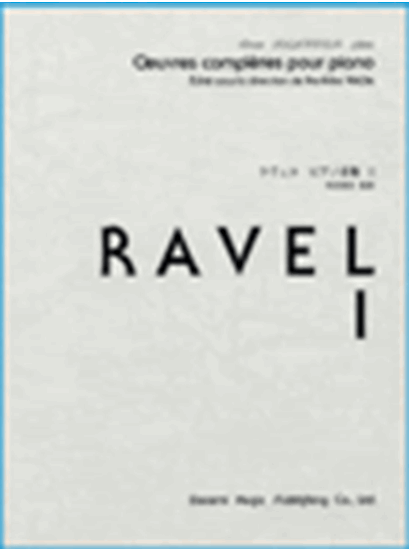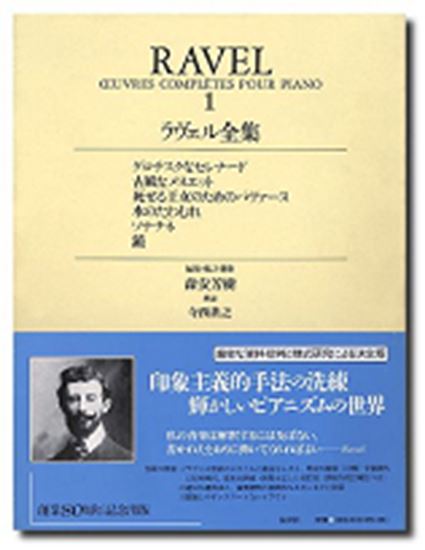Ravel, Maurice : Sérénade grotesque
Work Overview
Publication Year:1975
First Publisher:Salabert
Instrumentation:Piano Solo
Genre:serenade
Total Playing Time:3 min 30 sec
Copyright:Public Domain
Commentary (2)
Author : Jinbo, Natsuko
Last Updated: January 20, 2015
[Open]
Author : Jinbo, Natsuko
Ravel's first completed piano work. The title inscribed on the autograph manuscript is simply Sérénade. Along with other early works such as Menuet antique, the influence of Chabrier (1841-1894) is evident, and the composer himself acknowledged this in his autobiographical writings. Orenstein points out a kinship with Chabrier's Bourrée fantasque in the opening staccato passage and the 'grotesque' atmosphere suggested by the title. The distinctive arpeggio writing, marked 'pizzicatissimo' and resembling a strummed guitar, can be seen as a precursor to the later 'Alborada del gracioso'.
Author : PTNA Piano Encyclopedia Editorial Department
Last Updated: January 20, 2015
[Open]
Author : PTNA Piano Encyclopedia Editorial Department
Composed around 1893 (at age 18) while he was a student at the Paris Conservatoire. At the time of its composition, Ravel was enrolled in Charles-Auguste de Bériot (1802-1870)'s piano class and Émile Pessard (1843-1917)'s harmony class. However, his performance in both was unsatisfactory, and he was expelled from both classes in 1895 due to the Conservatoire's internal regulations. Meanwhile, during this period, he deepened his friendship with the Spanish pianist Ricardo Viñes (1875-1943), who was also a student of de Bériot and would later premiere most of Ravel's major piano works. In February 1893, Ravel and Viñes reportedly visited Chabrier's home together and performed his Trois valses romantiques in front of the composer himself. Chabrier's influence (→General Overview) and an interest in Spanish elements would serve as a key to understanding Ravel's compositional style during this period.
This work was not published during Ravel's lifetime and, like most of his other works from the 1890s, including Sites auriculaires, was at one point believed to be lost. Through the efforts of American Ravel scholar Arbie Orenstein, it was published by Éditions Salabert in 1975 and premiered by Orenstein himself on February 23 of the same year at the Charles S. Colden Auditorium, Queens College, City University of New York.
References
- Orenstein, Arbie. Ravel: Man and Musician. New York: Dover Publications, 1991. Translated by Satsuki Inoue, Ongaku no Tomo Sha, 2006.
- Orenstein, Arbie. A Ravel Reader: Correspondence, Articles, Interviews. New York: Columbia University Press, 1990.
PTNA & Partner Channel Videos(1items)
Sheet Music
Scores List (5)

(株)ドレミ楽譜出版社

(株)全音楽譜出版社

ハンナ(ショパン)

(株)ドレミ楽譜出版社

(株)春秋社

